Disclosure: This article contains affiliate links. We may earn a commission from purchases at no extra cost to you, which helps our travel content.
The intricate layout of Jerusalem's Old City reveals itself like a masterfully designed soundscape—layers upon layers of history, culture, and spirituality compressed into less than one square kilometer. As someone who analyzes urban spaces professionally, I found myself completely recalibrating my sense of scale and time while navigating these ancient stones. My recent fall journey through this living palimpsest offered insights into how sacred architecture shapes human experience in ways that modern urban planning can only aspire to replicate.
Navigating the Quarters: An Urban Planner's Perspective
Jerusalem's Old City presents a fascinating case study in organic urban development, with four distinct quarters—Jewish, Muslim, Christian, and Armenian—flowing into one another through a labyrinthine network of pathways that defy conventional wayfinding logic. The spatial compression here is remarkable; major religious sites that would command expansive plazas in any modern city instead nestle against residential buildings and market stalls in a dense urban fabric.
During my exploration, I found that traditional maps were less useful than simply surrendering to the flow of the streets. The transitions between quarters aren't marked by hard boundaries but rather by subtle shifts in architectural details, ambient sounds, and even the scent profiles of local markets. This gradient approach to cultural zoning creates natural buffer zones that modern urban planners often attempt to engineer through careful land use policies.
For navigation, I relied heavily on my Garmin fenix 7S with its breadcrumb trail feature that allowed me to wander freely while always being able to retrace my steps—a technological solution to an ancient maze. The watch's altimeter was particularly useful for understanding the subtle elevation changes that define the experiential journey through the city's quarters.

💡 Pro Tips
- Visit the Austrian Hospice rooftop for the best panoramic overview of the quarters to orient yourself
- Use physical landmarks rather than street names for navigation—most locals give directions this way
- Explore during early morning (6-8am) to experience the quarters before tourist crowds arrive
Sonic Landscapes: The Auditory Experience of Sacred Space
As someone deeply connected to electronic music culture, I've always been fascinated by how sound shapes our perception of space. Jerusalem's Old City offers one of the most complex sonic landscapes I've encountered in my travels. The call to prayer from Al-Aqsa Mosque creates a temporal rhythm that ripples through the Muslim Quarter five times daily. Meanwhile, church bells from the Christian Quarter mark different hours, creating fascinating moments of sonic overlap or counterpoint.
I spent one entire day conducting what I call an 'auditory transect'—walking slowly from the Damascus Gate to the Western Wall, recording the gradual transformation of ambient sounds. The transition from the bustling souks with vendors' calls to the relative quiet of the Jewish Quarter creates a natural sound installation that rivals any carefully designed acoustic experience.
To fully appreciate this sonic dimension, I used my field recorder to capture these soundscapes, allowing me to analyze the acoustic properties later. For couples visiting Jerusalem, I recommend a 'sound walk' at dusk when the day's activities quiet down and the calls to prayer create a haunting backdrop to the ancient stones.
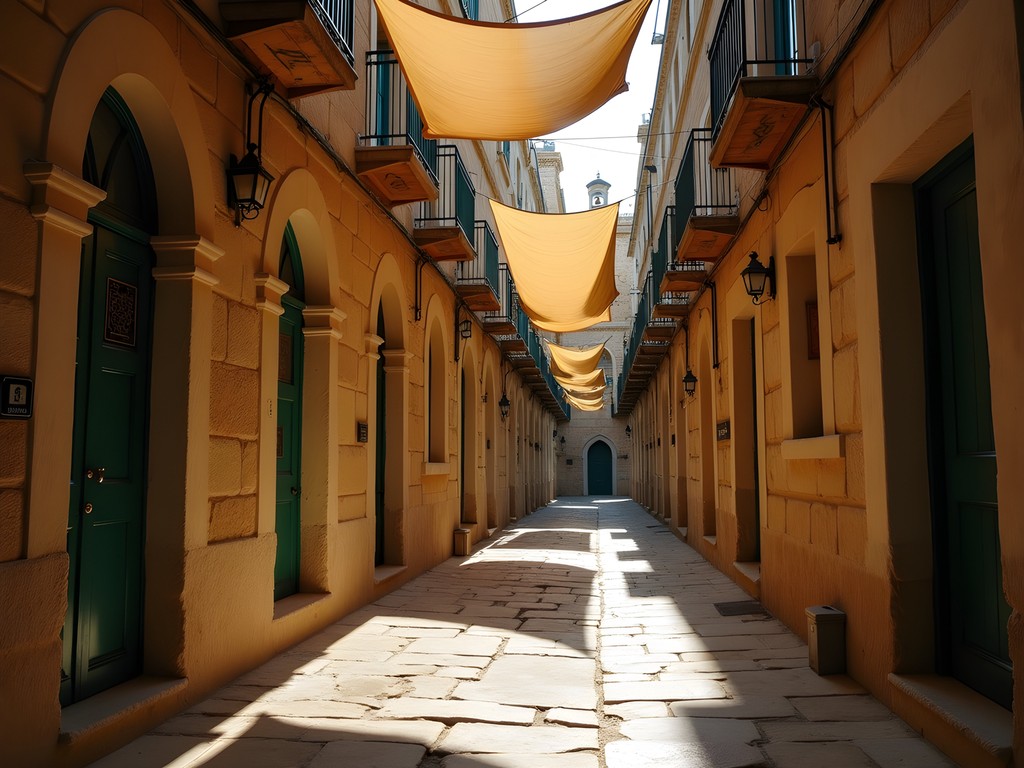
💡 Pro Tips
- Experience the Western Wall on Shabbat evening to witness the singing that creates unique acoustics against the ancient stones
- Visit the Church of the Holy Sepulchre during Coptic or Armenian services to hear chanting traditions dating back centuries
- Find a rooftop cafe near Al-Aqsa around sunset to experience the call to prayer with panoramic views
Temporal Design: Experiencing Jerusalem After Dark
Most travelers experience Jerusalem's Old City during daylight hours, but the nocturnal dimension reveals an entirely different urban rhythm. After sunset, the tourist crowds dissipate, and the quarters transform into more authentic community spaces. This temporal shift in usage patterns mirrors what we urban planners call 'chrono-urbanism'—the study of how urban spaces transform throughout daily cycles.
For couples seeking intimate cultural experiences, I recommend booking accommodations within the Old City walls rather than in the modern city. We stayed at a heritage guesthouse in the Christian Quarter, which allowed us to experience the evening transformation when residents reclaim their neighborhoods. The portable lantern proved invaluable during evening walks, providing warm, adjustable lighting that was respectful of the historic atmosphere while illuminating the ancient stones with a gentle glow.
One evening, we discovered an underground Byzantine cistern repurposed as a small concert venue featuring contemporary interpretations of traditional music. These hidden cultural spaces reveal themselves primarily to those willing to experience the city beyond standard touring hours. Several restaurants within the walls also transform after tourist hours, shifting from standardized menus to more authentic family-style dining experiences for locals and overnight visitors.
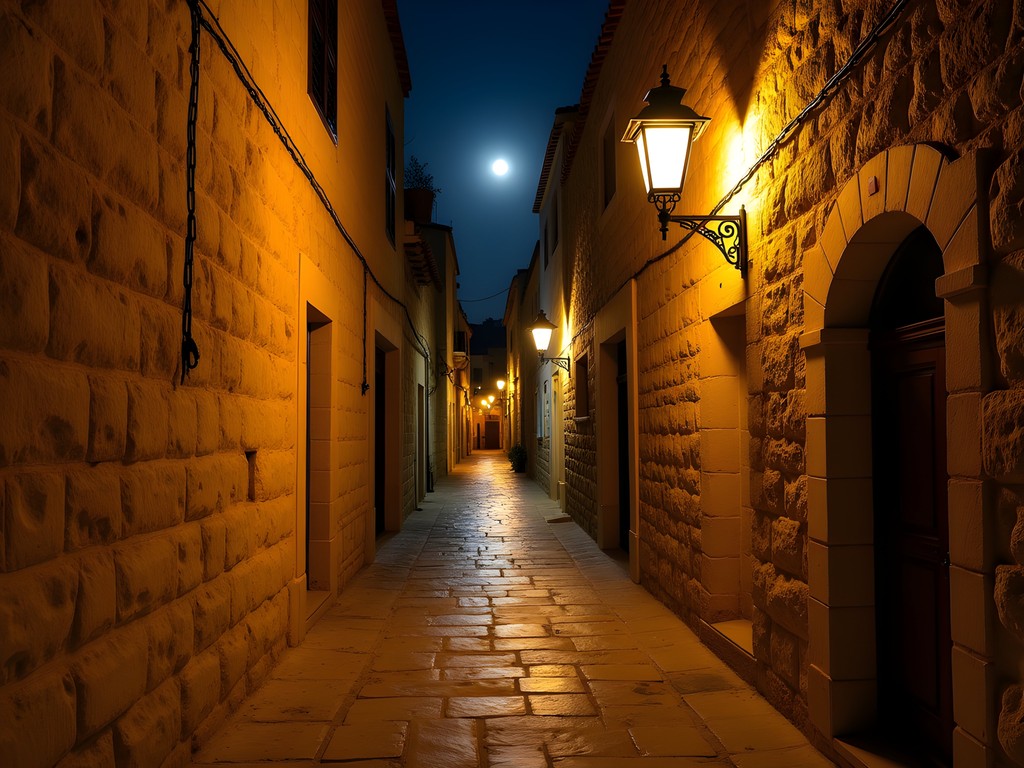
💡 Pro Tips
- Book a night tour of the Western Wall Tunnels for a less crowded, more atmospheric experience
- Visit Austrian Hospice's cafe in the evening for classical music and local wine in a serene courtyard setting
- Look for small local concerts in repurposed historic spaces—ask your accommodation host for recommendations
Culinary Cartography: Mapping Jerusalem Through Taste
One of my favorite urban analysis techniques is what I call 'culinary cartography'—mapping a city through its food traditions to understand cultural boundaries and influences. Jerusalem's Old City offers an exceptional case study with distinct culinary zones that both reinforce and transcend the quarter boundaries.
For couples, I recommend a progressive dining experience that crosses cultural lines—begin with hummus and falafel in the Muslim Quarter (Abu Shukri near Station VII of the Via Dolorosa serves what locals consider the most authentic), then sample knafeh pastry as you transition toward the Christian Quarter. Continue to Armenian lahmajun (flatbread with minced meat) in the Armenian Quarter, and finish with malabi rosewater pudding in the Jewish Quarter.
To enhance this culinary journey, I carried my spice collection kit to collect small amounts of local spice blends from various markets. This compact system allowed me to document the subtle variations in za'atar mixtures across different cultural traditions—each family and shop has their proprietary blend that tells a story of cultural exchange and preservation.
The most revealing culinary experiences came from small family establishments that maintain traditional cooking methods. Look for places where you see locals eating, particularly older residents, as these often preserve authentic recipes that pre-date modern tourism.
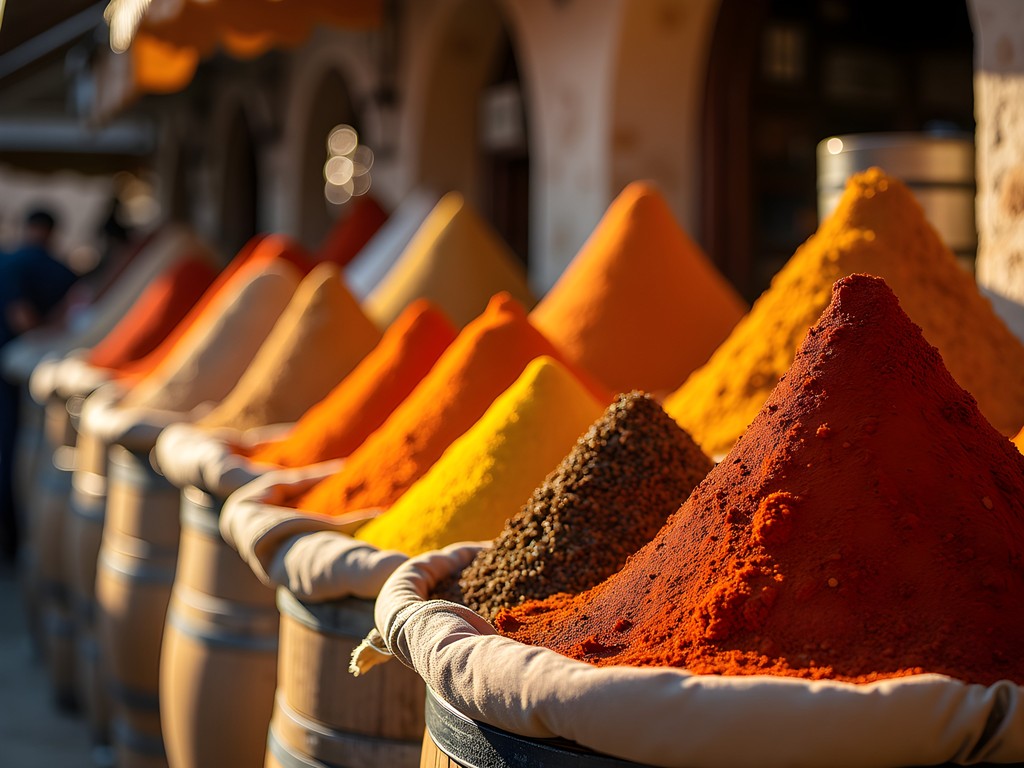
💡 Pro Tips
- Visit Zalatimo's near the Church of the Holy Sepulchre for mutabak pastry made using techniques unchanged since 1860
- Book a home-cooking class with a Palestinian family in the Muslim Quarter through the non-profit Chefs for Peace organization
- Sample kanafeh at different shops across quarters to taste how the same dessert varies between cultural traditions
Digital Detox in an Analog City
As someone deeply embedded in digital culture through my work with gaming communities, I found Jerusalem's Old City to be a profound counterpoint—a space that demands presence in ways our screen-mediated lives rarely do. The physical experience of navigating narrow passages, touching 2,000-year-old stones, and engaging with traditions that predate digital technology offers a rare opportunity for couples to reconnect with each other and with a slower rhythm of existence.
While I typically document my travels extensively, I instituted a partial digital detox during our week in Jerusalem—limiting photography to specific one-hour windows each day and keeping my phone in airplane mode. Instead, I used a travel journal to sketch urban layouts and record observations, a practice I found surprisingly centering.
This analog approach to experiencing Jerusalem revealed subtleties I might have missed while trying to capture the perfect Instagram moment. The textural qualities of Jerusalem stone changing throughout the day as light shifts across its surface. The cooling effect of traditional architecture during midday heat. The way sound travels through arched passageways creating natural amplification for street musicians.
For couples seeking deeper connection with each other and the destination, I recommend designating specific technology-free periods each day. The travel lock box proved useful for storing our devices during these periods—a simple solution that removed the temptation to constantly document rather than experience.
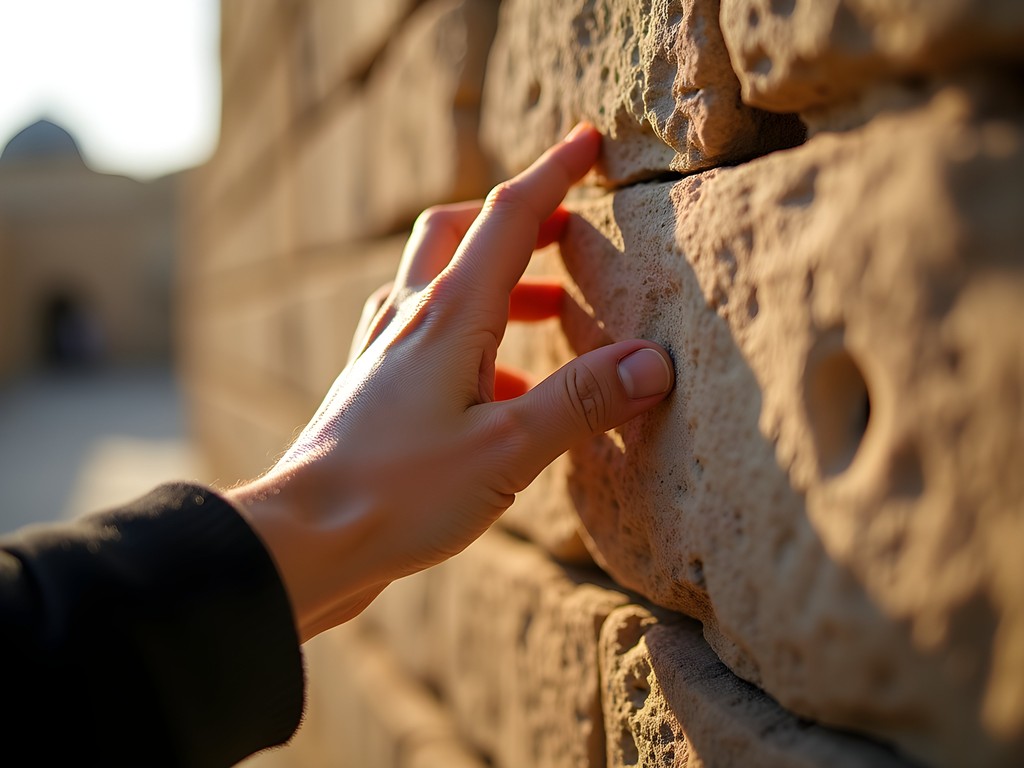
💡 Pro Tips
- Choose accommodations with traditional architectural features rather than modern amenities for a more immersive experience
- Designate specific 'analog hours' each day when all devices are stored away
- Bring a quality sketchbook and pencils even if you're not an artist—drawing forces you to observe details you might otherwise miss
Final Thoughts
Jerusalem's Old City represents what I consider the ultimate challenge to modern urban planning—how to create spaces that facilitate profound human experiences across cultural boundaries. My week navigating these sacred pathways revealed that the most successful urban spaces aren't necessarily the most efficient or technologically advanced, but rather those that create opportunities for authentic human connection and cultural exchange.
For couples seeking deeper connection with each other and with global heritage, Jerusalem offers a rare laboratory where you can witness how urban design shapes human experience across millennia rather than decades. The compression of diverse cultural expressions into such a compact urban footprint creates natural opportunities for cross-cultural understanding that feel increasingly rare in our segregated modern cities.
As you plan your own journey through these sacred footsteps, remember that the most meaningful experiences often come from slowing down, engaging all senses, and allowing yourself to become temporarily lost—both physically in the winding alleyways and metaphorically in the layers of history beneath your feet. The city demands presence in a way few modern destinations do, offering a profound reminder of how urban spaces shape our collective human story across time.
✨ Key Takeaways
- Jerusalem's Old City functions as a living laboratory for understanding how sacred architecture shapes human experience
- The most meaningful cultural experiences come from engaging during non-peak hours when local life emerges
- Cross-quarter exploration reveals how seemingly distinct cultural traditions actually blend and influence each other
📋 Practical Information
Best Time to Visit
Fall (October-November) or Spring (March-May) for mild temperatures and fewer crowds
Budget Estimate
$150-200 per day for mid-range accommodations, meals and experiences
Recommended Duration
Minimum 5 days to experience all quarters thoroughly
Difficulty Level
Moderate - Involves Extensive Walking On Uneven Surfaces And Navigating Crowds


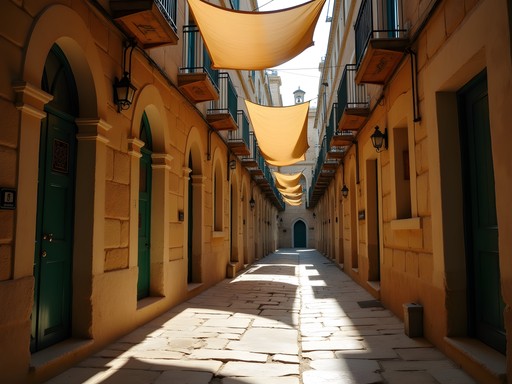
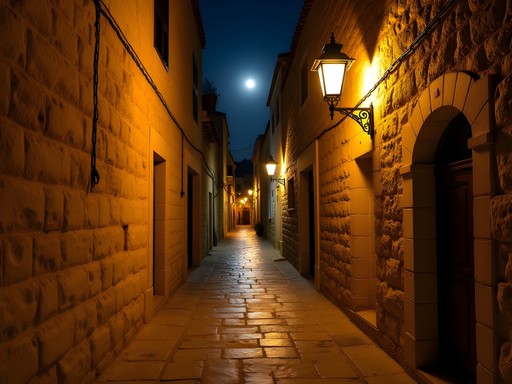












Comments
Riley Griffin
Skylar, your description of Jerusalem as a 'masterfully designed soundscape' is exactly what I tried explaining to friends after our family trip last year! What really made our experience special was staying at a small guesthouse within the walls rather than a hotel outside. Our kids got to experience the rhythm of the Old City - hearing the morning call to prayer, watching shopkeepers set up, and feeling the city transform throughout the day. We followed your advice about the 'Temporal Design' and took the kids on an evening walk along the ramparts at sunset. They still talk about watching the golden light fade over all four quarters simultaneously. For families considering this trip - it's an incredible educational experience that brings history and religious studies to life in a way no classroom can match.
moonbackpacker372
Just booked my flights! So excited after reading this!
jerusalemlocal
As someone who lives just outside the Old City, I love seeing visitors appreciate the layers here. One tip I'd add to your excellent guide: visit the Austrian Hospice in the Muslim Quarter for their rooftop view - it's less crowded than the official viewpoints and their sachertorte in the café is a delicious contrast to the local sweets. Also, the sound mapping project you mentioned has expanded - they now have listening stations at 12 points throughout the Old City where you can hear historical recordings from different eras.
Oliver Duncan
Thanks for the Austrian Hospice tip! That sounds like exactly the kind of hidden gem I love. Is it open daily?
jerusalemlocal
Yes, open daily 10am-6pm, but the rooftop sometimes closes early in winter. Weekday mornings are quietest!
Nova Rice
This post captures the multisensory experience of Jerusalem so beautifully! As someone who's visited three times now, I've found that each visit reveals new layers. The 'Navigating the Quarters' section resonated with me - I love how you framed the Old City as an urban planning challenge. On my last trip, I hired a local architect for a private tour focusing on how the city has evolved over millennia while maintaining its sacred character. The juxtaposition of ancient structures against modern adaptations tells such a powerful story. For anyone visiting, I recommend exploring very early morning when the streets are quiet and you can almost feel the weight of history before the day's hustle begins.
moonbackpacker372
Early morning tip is gold! Adding that to my itinerary.
waveninja
Skylar!!! Your 'Culinary Cartography' section had me DROOLING! I spent two weeks in Jerusalem last year and gained like 10 pounds from all the amazing food. The hummus at Abu Shukri in the Muslim Quarter literally changed my life. And those knafeh desserts? OMG. Anyone else have food recommendations for the Old City?
nomaddiver
Planning my first trip to Jerusalem this fall. How safe is it to explore the Old City at night as Skylar mentions in the 'Temporal Design' section? Any specific night tours you'd recommend?
Riley Griffin
We felt very safe walking through the Old City in the evening with our kids (ages 10 and 14). Just stick to well-lit main paths and more populated areas. The Tower of David Night Spectacular show is absolutely worth seeing - it projects the history of Jerusalem onto the ancient citadel walls. My kids were mesmerized! Also, many tour groups do evening walks that combine history with the magical atmosphere of the city after dark.
nomaddiver
Thanks Riley! That light show sounds perfect. Did you need to book tickets in advance?
Riley Griffin
Yes, definitely book ahead! We used our travel guidebook to plan most of our visit, but the night show tickets sell out fast during peak season.
winterperson4592
I visited Jerusalem last summer and your description of the 'sonic landscape' is spot on! The call to prayer echoing through the narrow streets while church bells ring nearby created this incredible audio experience I wasn't prepared for. The contrast between the bustling markets during the day and the almost mystical quiet at night was something I'll never forget. Did anyone else feel overwhelmed by all the sensory input at first?
Nova Rice
Absolutely! My first day in the Old City was sensory overload in the best possible way. I actually sat in a quiet corner cafe for an hour just processing everything. The sounds, smells, and visual contrasts are unlike anywhere else I've traveled.
winterperson4592
Glad I'm not the only one! Which quarter did you find most interesting?
Nova Rice
The Armenian Quarter surprised me the most - fewer tourists and such rich history. I stayed at a small boutique hotel there and loved the peaceful evenings.
starchamp
Back from my Jerusalem trip and wow, you were right about everything! That hummus at Abu Shukri was life-changing. One question though - did anyone find the Christian Quarter too touristy? I felt like I missed the authentic experience there.
redbuddy
Try visiting very early morning (like 7am) when locals are heading to work and shopkeepers are just opening up. Completely different vibe before the tour groups arrive!
history_buff_dave
That shot of the light streaming through the dome at the Church of the Holy Sepulchre is incredible! What time of day did you take it?
wanderlust_emma
Going to Jerusalem next month! Any recommendations for those food tours you mentioned in the Culinary Cartography section?
Skylar Roberts
I'd recommend Abraham Hostel's Mahane Yehuda market tour - they combine history with amazing tastings, and you get to meet local vendors. Book at least a week ahead!
Venture X
Premium card with 2X miles, $300 travel credit, Priority Pass